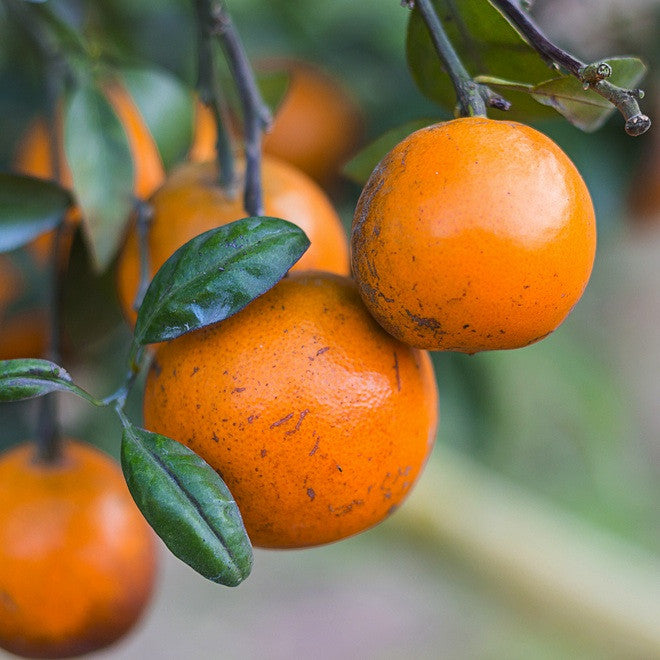TIMELESS Essential Oils
Orange, Sweet, Organic
Couldn't load pickup availability
Premium Therapeutic Sweet Orange essential oil, Organically Grown - available in personal use sizes and bulk sizes
Product Details
Botanical name
Citrus sinensis
Extraction method / Source
Peel of the fruit is Cold Pressed -- Pressing without heat preserves the aromatic and therapeutic qualities of the oil.
Aroma
Sweet, Fruity
Note classification
Top
Odor Intensity
1
Key constituents
Limonene, Myrcene
Plant description
Botanical family: Rutaceae (citrus)
Sweet Orange is an evergreen tree native to Asia, and is now grown in temperate areas around the globe. The orange tree grows to a height of 20 - 30 feet, has dark green leaves, and produces fragrant white flowers which develop into bright orange edible fruits.
Regions of Production
USA
Growing Practices
Trees are organically farmed. Fruits are tested for purity after harvest.
History / Fun Facts
A key constituent of Sweet Orange essential oil is limonene. Limonene has been studied extensively for its properties which retard tumor growth. It takes approximately 3000 oranges to produce one kilo of Sweet Orange essential oil!
Properties
Anticoagulant, anti-tumoral, astringent, circulatory stimulant, relaxant, reduces oily skin (Battaglia, 2003).
Please refer to the Glossary for terms which may be new to you.
Uses / Benefits
Helps manage arteriosclerosis, high blood pressure and fluid retention. Reduces fine skin wrinkles and oiliness of the skin. Helps calm muscle spasms, and promotes restful sleep. Helps reduce subcutaneous cellulite. Supports cancer treatment.
Fragrant influences
Cooling, mood uplifting, calming (especially for children)
Modes of Administration
Inhalation: Diffusion, Direct inhalation, often used in a nasal inhaler
Blends well with
Bay, Benzoin, Bergamot, Black Pepper, Cinnamon, Clove, Coriander, Frankincense, Geranium, Ginger, Grapefruit, Jasmine, Juniper, Lavender, Lemon, Litsea Cubeba (Maychang), Marjoram, Neroli, Patchouli, Petitgrain, Rose (absolute), Sandalwood, Vetiver, Ylang Ylang
Safety
Non-toxic. May irritate sensitive or broken skin. Avoid applying to skin that will be exposed to direct sunlight or UV light within 24 hours.
Notice
This information is for educational purposes only. It has not been evaluated by the US Food and Drug Administration. It is not intended to diagnose, treat, cure or prevent any condition or disease. Although we strive to provide information which is accurate and up to date, we cannot guarantee the accuracy or completeness of this information.
Precautions
Pure essential oils are highly concentrated plant extracts. Do not use them undiluted, or in the eyes or mucus membranes. If applying an essential oil to the skin, always dilute it with a proper carrier oil and test on a small patch of skin before applying to a large area. Do not take them internally except under the direction of a qualified professional trained in Aromatherapy. Always familiarize yourself with the safety, contraindications and proper preparation of each essential oil before use. Note that when using essential oils for children and the elderly, very low concentrations should be used. Keep all essential oils away from children and pets.
References
Battaglia, Salvatore, The Complete Guide to Aromatherapy, Second Edition, 2003. The International Centre of Holistic Aromatherapy, Brisbane, Australia
Worwood, Valerie Ann, The Complete Book of Essential Oils & Aromatherapy, 1991. New World Library, Novato, California
TIMELESS Essential Oils guarantees the purity and quality of all our therapeutic oils. The current Certificate of Analysis is available upon request. All essential oils are best stored in an airtight container away from heat and light.


